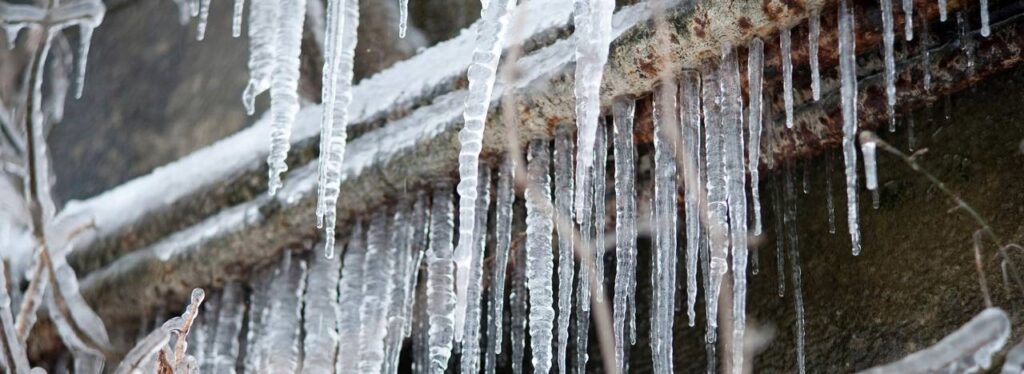Tips to Protect Your Plumbing from Freezing: Critical Tips
Tips to Protect Your Plumbing from Freezing: Critical Tips
Blog Article
We've noticed this post about Preventing and dealing with frozen pipes directly below on the web and think it made good sense to write about it with you on this site.

Winter can ruin your pipes, especially by freezing pipes. Right here's just how to stop it from happening and what to do if it does.
Introduction
As temperatures drop, the risk of frozen pipes rises, possibly leading to costly fixings and water damages. Understanding how to stop frozen pipelines is crucial for house owners in cold climates.
Comprehending Icy Pipes
What triggers pipelines to ice up?
Pipes ice up when subjected to temperature levels listed below 32 ° F (0 ° C) for prolonged periods. As water inside the pipes ices up, it broadens, putting pressure on the pipe wall surfaces and possibly causing them to burst.
Risks and problems
Frozen pipelines can bring about water system interruptions, home damage, and costly repairs. Ruptured pipes can flood homes and trigger substantial structural damage.
Signs of Frozen Pipes
Identifying frozen pipes early can avoid them from bursting.
Exactly how to recognize icy pipes
Try to find reduced water circulation from faucets, uncommon odors or sounds from pipes, and noticeable frost on exposed pipes.
Avoidance Tips
Insulating susceptible pipelines
Cover pipes in insulation sleeves or use warmth tape to shield them from freezing temperatures. Concentrate on pipelines in unheated or exterior locations of the home.
Home heating techniques
Maintain interior spaces sufficiently warmed, specifically locations with pipes. Open cupboard doors to allow warm air to circulate around pipelines under sinks.
Shielding Exterior Pipes
Garden pipes and outside faucets
Disconnect and drain pipes garden hose pipes before winter season. Install frost-proof spigots or cover exterior taps with protected caps.
What to Do If Your Pipes Freeze
Immediate activities to take
If you believe icy pipes, keep taps open up to eliminate pressure as the ice thaws. Use a hairdryer or towels taken in warm water to thaw pipes gradually.
Long-Term Solutions
Architectural modifications
Consider rerouting pipelines away from outside wall surfaces or unheated areas. Add additional insulation to attic rooms, basements, and crawl spaces.
Updating insulation
Buy premium insulation for pipelines, attics, and walls. Proper insulation assists keep constant temperature levels and minimizes the threat of icy pipelines.
Verdict
Stopping icy pipelines needs positive steps and fast feedbacks. By recognizing the reasons, signs, and safety nets, home owners can secure their plumbing during winter.
6 Proven Ways to Prevent Frozen Pipes and Protect Your Home
Disconnect and Drain Garden Hoses
Before winter arrives, start by disconnecting your garden hoses and draining any remaining water. Close the shut-off valves that supply outdoor hose bibs and leave the outdoor faucet open to allow any residual water to drain. For extra protection, consider using faucet covers throughout the colder months. It’s also important to drain water from any sprinkler supply lines following the manufacturer’s directions.
Insulate Exposed Pipes
Insulating your pipes is an effective way to prevent freezing. Pipe insulation is readily available at home improvement stores and is relatively inexpensive. Pay close attention to pipes in unheated areas such as the attic, basement, crawl spaces, or garage. Apply foam insulation generously to create a buffer against the cold. You can also wrap your pipes in heat tape or thermostat-controlled heat cables for added warmth.
Seal Air Leaks
Inspect your home for any cracks or openings that could let in cold air. Seal any holes around the piping in interior or exterior walls, as well as the sill plates where your home rests on its foundation. Additionally, make sure to keep your garage door closed unless you’re entering or exiting. Leaving it open creates a significant air leak that can lead to frozen pipes.
Allow Warm Air Circulation
During cold snaps, it’s essential to allow warm air to circulate evenly throughout your home. Leave interior doors ajar to promote better airflow. Open kitchen and bathroom cabinets to help distribute heat consistently around the rooms. If you have small children or pets, be sure to remove any household chemicals or potentially harmful cleaners from open cabinets for safety.
Let Faucets Drip
A small trickle of water can make a big difference in preventing ice formation inside your pipes. When temperatures drop significantly, start a drip of water from all faucets served by exposed pipes. This continuous flow helps prevent the water from freezing. Additionally, running a few faucets slightly can relieve pressure inside the pipes, reducing the chances of a rupture if the water inside does freeze.
https://choateshvac.com/6-proven-ways-to-prevent-frozen-pipes-and-protect-your-home/

We had been introduced to that editorial on 6 Ways to Prevent Frozen Pipes through an associate on another web page. Sharing is good. Who knows, you might be helping someone out. We enjoy reading our article about Helpful Tips to Prevent Frozen Pipes this Winter.
Schedule Today! Report this page